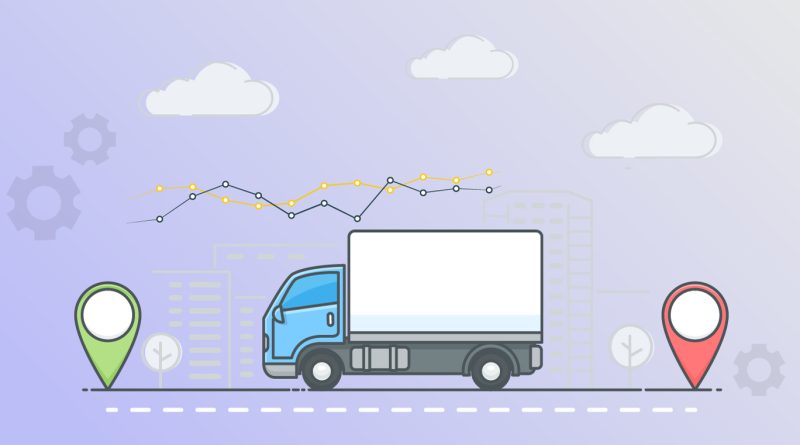Last Mile Delivery: What You Need to Know in 2024
While vital for customer satisfaction, last-mile delivery poses challenges in urban areas due to rising e-commerce demands. With growing parcel volumes, delivery congestion and environmental concerns escalate. To address this, retailers must optimise delivery efficiency without compromising profitability. This article explores strategies to enhance final-mile delivery, ensuring swift service and exceptional customer experiences amid urban logistics complexities.
What Is Last Mile Delivery?
Last-mile delivery encompasses all actions from the closest hub or warehouse to the customer, not just the final mile. It’s about the end of the delivery journey, ensuring the product reaches its destination efficiently. So, while it’s often called the “last mile,” it involves more than just that distance. It’s the critical stage when the item is near your doorstep, making sure it gets there smoothly and on time, which is essential for customer satisfaction and business success.
Last Mile Delivery Process
The entire last-mile delivery process may sound simple, but it can be difficult to execute. Take a look at the detailed steps below to understand about it:-
Order Placement by Customer
The process begins when a customer places an order, typically online or in-store. The order is directed to your centralised system, which arranges it for last-mile delivery based on preset criteria. Key order details, such as customer address and shipping preferences, are included.
Product Arrival at Warehouse
Suppliers or manufacturers ship the ordered products to your warehouse or distribution centre. Here, items are sorted, organised, and readied for dispatch to their respective destinations.
Assignment to Delivery Personnel
Your team assigns orders to suitable delivery personnel, considering factors like delivery location, schedule, and vehicle capacity.
Loading onto Delivery Vehicles
Products are scanned and loaded onto delivery vehicles before departure. Real-time tracking ensures visibility into the items’ journey, syncing with inventory systems to prevent errors or losses.
Proof of Delivery Collection
Delivery personnel complete the delivery, obtaining proof of delivery from the customer, either electronically or through physical documentation.
Last Mile Delivery Costs
The last mile typically constitutes a significant portion of total supply chain expenses, ranging from 41% to 53%, as reported by various sources. Factors such as intricate routing, traffic congestion, and the necessity for specialised vehicles or equipment all contribute to the elevated costs associated with final-mile delivery.
For instance, a business catering to well-off customers with perishable goods might need costly refrigerated trucks from truck rental services. Also, there may be a need for adjustments in delivery routes or stops, particularly if orders change or drivers face challenges. Furthermore, as businesses grow, the complexity and costs of last-mile delivery typically rise in tandem.
Key Trends Shaping Last Mile Logistics
Personalised Delivery Experiences:
From tailored time slots to customised packaging, 2024 is the year of last-mile delivery. Personalisation is the key to boosting customer satisfaction and transparency within the logistics supply chain.
Autonomous Delivery Vehicles
To gain efficient and accurate delivery, one can anticipate drones and robots in 2024. This will further reduce costs, enhance speed and increase efficiency in logistics.
Sustainable Delivery Practices
Look for a surge in eco-friendly solutions like electric vehicles and route optimization to reduce carbon footprint, meeting consumer demands for environmentally conscious practices.
Collaborative Logistics
Witness heightened collaboration among logistics firms, e-commerce platforms, and retailers to optimise resources, share infrastructure, and improve overall efficiency in last-mile delivery.
AR and Virtual Assistants
Experience a revolution with AR, allowing customers to visualise packages virtually, and AI-powered virtual assistants provide real-time delivery updates, enhancing communication and satisfaction.
Drone Last-Mile Automation
Witness the integration of drones, self-driving delivery vehicles, and bots as solutions to last-mile delivery challenges. Amazon’s investment in autonomous technology allows for rapid deliveries, such as those from Amazon Pharmacy within 60 minutes via drones, heralding a futuristic approach to logistics.
Challenges In Last Mile Delivery
Last-mile delivery has received a huge amount of popularity as well as criticism due to its drawbacks. Take a look at its challenges below:-
- Slower travel speeds: Increased congestion and urban traffic lead to delays in delivery times.
- Lost deliveries: Poor address accuracy or package mishandling results in lost shipments, impacting customer satisfaction.
- Returns: Handling product returns adds complexity and costs to the last-mile process.
- Environmental factors: Environmental concerns such as emissions from delivery vehicles contribute to sustainability challenges.
- Cost reduction: Retailers aim to optimise last-mile delivery expenses to maintain profitability and competitive pricing.
Future Outlook For Last Mile Delivery
Solutions such as alternate distribution methods and route optimisation algorithms are likely to alleviate problems as technology advances. The integration of sustainable practices, such as eco-friendly packaging and electric cars, will keep influencing how last-mile logistics develop in the future. Automation advances, such as the usage of drones and self-driving cars, will transform the effectiveness and speed of distribution.
Conclusion
Embracing last-mile delivery trends isn’t just about gaining and retaining customers; it’s also about addressing various challenges and enhancing operational efficiency. From sustainability objectives to meeting delivery targets, these trends hold the promise of greater efficiency and cost-effectiveness. By staying informed and adapting to these trends, businesses can stay ahead of the curve and meet the evolving demands of today’s consumers.

